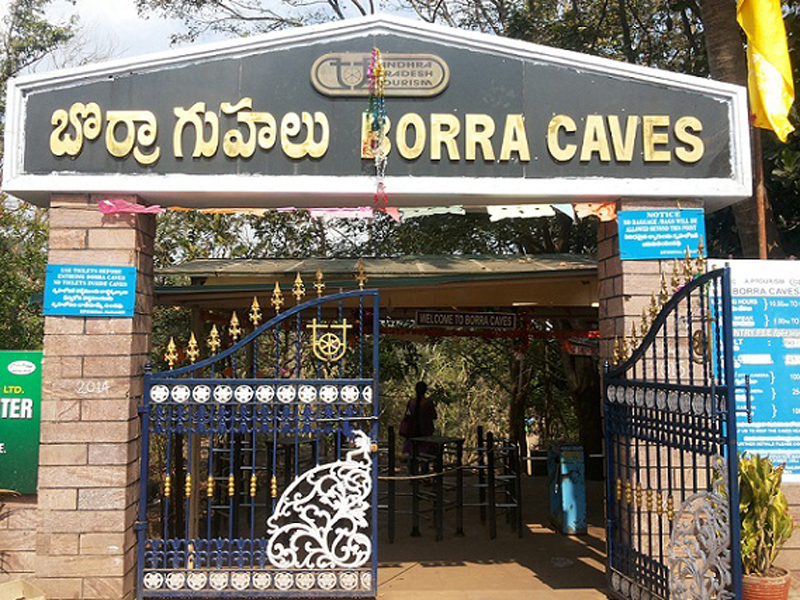Photo of Borra Caves Wonders in Arakur Valley, Andhra Pradesh
🖥️
Nestled on Mount Ananthagiri in the Araku Valley is one of the largest caves in the Indian subcontinent, known as the Borra Caves. The caves are known for their stalactite and stalagmite formations, which have withstood the passage of time for over a million years.
Discovered by King William King George in 1807, the cave is said to have originated from the Gosthani River as it flows continuously over the limestone terrain. Legend has it that Borra Cave was discovered by a local tribe when a cow grazing at the top of the cave fell from a hole in the roof.
A lingam-like stone was found inside the cave, which is believed to be an interpretation of Lord Shiva, who protects cows. To commemorate this belief, a small temple of Lord Shiva was built outside the cave, attracting many devotees. Borra Caves, also known as Borra Guhalu, is a magnificent tourist attraction with historical and religious purposes.
To enter Bora Cave:
Borra Cave is located 92 kilometers north of Visakhapatnam at an altitude of 3000 feet. The entrance of the cave is about 100 meters high and 75 meters wide. There are steps carved out of the rock at the entrance, where you are greeted by monkeys wandering around the big tree.
Official information board outside Borra Caves:
An information board at the entrance to the cave provides visitors with a brief history and other details of the cave and its surroundings.
see more: Krubera Cave Pictures
Religion:
Although Borra Cave is one of the best tourist attractions in Andhra Pradesh, locals flock to the cave daily to worship Shivalinga and the stone statue of the holy cow or Kamadhenu located above Lingam deep in the cave. It is widely believed that the udder of the cow is the source of the Gostani River, from which the cave originated.
Stalactites and stalagmites:
The cave houses the most famous formations of stalactites and stalagmites, irregularly shaped due to the flow of the Gosthani River between these solidified structures. The water seeping from the cave roof breaks down the minerals in the limestone, forming stalactites on the cave roof, which then seep further into the ground to form stalagmites. The 150-million-year-old formations of stalactites and stalagmites are truly an overwhelming sight.
see more: Belum Caves images
formation:
Over the centuries, the formation of stalactites and stalagmites has evolved into the shapes carved naturally within the cave. Look closely and you’ll find bearded saints, Shiva and Parvati, mothers and children, human brains, trees with overhanging roots, temples and churches, and even elephants like the one seen in this painting animal. Some of these structures have religious significance, while others are just a stimulus to the imagination.
Lights:
The interior of Bora Cave is deep and completely dark due to the lack of sunlight penetration. Therefore, Andhra Pradesh Tourism has installed many sodium vapor lamps, mercury lamps and halogen lamps to illuminate the paths inside the caves, providing stunning views of the various rock formations.
see more: History of Kara Cave
places of worship:
At the end of a small tunnel deep in the cave is a small place of worship made up of stalagmite lingams, where devotees, especially tribes, come to worship the Hindu god Shiva especially during the festivals of Shivratri.
Tourist Attractions:
The aerial view of Borra Caves attracts thousands of tourists for a visual feast of ancient archaeological remains.
Outside Bora Cave:
The breathtaking view of the Araku Valley outside the Borra Caves is itself a tourist attraction for cave tourists. The scenic beauty of the mountains, rich in flora and fauna, provides an almost magical setting.
Image Source: 1, 2, 3, 4, 5, 6, 7, 8, 9.

